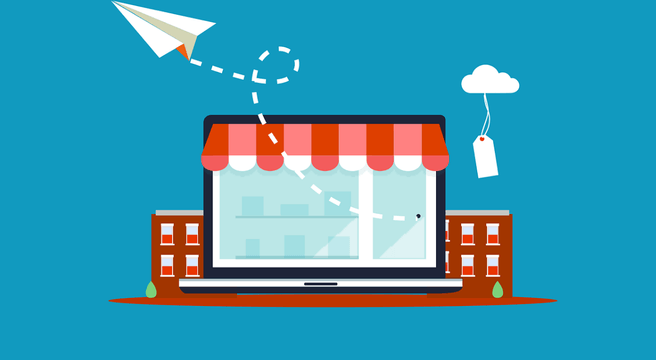You can do everything right on your website, yet people will still put things in their shopping basket and then disappear. In fact, on average, around 68% of online shopping baskets are abandoned before users check out.
You wouldn’t walk into a supermarket, fill up your trolley and then walk out leaving it behind. So why do people do this online? And how can you stop them?
Well, abandoned shopping baskets are part and parcel of doing business online. Many of those visitors will be off comparing what you offer with other providers. Heck, one piece of research found that 26% of people placed an item in their shopping basket just to check the delivery cost.
So while the thought that visitors are walking away might seem frightening, some will be back under their own steam.
Here are three proven ways to tempt back the rest.
1. Send basket abandonment emails
It’s a good idea to capture a visitor’s email address early in the checkout process. Make it the first piece of information you ask for, if possible.
That way, when someone fails to complete their order, you can send one or more emails encouraging them to finish checking out.
Sometimes, a little nudge is all it takes. You can offer an incentive like a modest discount or free shipping if they check out soon.
Alternatively, use the email to remind them about your excellent support, fast delivery or some other aspect of your service. You can even just send a friendly message inviting them to get in touch if they have questions.
Use your customer knowledge to plan the frequency of abandonment emails. Sending an email immediately might come across as pushy, but wait too long and you could miss the opportunity altogether.
If you know customers tend to make purchasing decisions quickly, send an email an hour or two after they leave your website. Conversely, if you sell items with a long lead-up to purchase, you might send an email the next day.
If possible, personalise your abandonment emails. Include the customer’s name and details of what was in their shopping basket.
2. Use retargeting banners
Retargeting allows you to attract people back to your website by showing them adverts on other websites.
The technology behind retargeting is straightforward. When someone visits your site, you store a cookie (a tiny data file) on their computer. This identifies that they’ve visited your website.
Once that person leaves your website, the presence of the cookie means they can be targeted with relevant adverts on other sites. This is usually accomplished through a large advertising network, rather than by placing adverts individually.
If you’ve ever been followed around by adverts for a site you’ve visited, that’s basic retargeting in action.
And that experience also hints at how retargeting can backfire. If people see your ads too often then they can become annoyed. Worse, if they’re buying a gift from you, having your adverts appear everywhere could spoil the surprise.
Retargeting works best when the ads are relevant and you don’t go over the top.
Try and feature the product the user had in their basket, show a clear call to action, consider offering a discount … and don’t show customers the same advert for weeks. If they don’t come back after a few reminders, they probably never will.
3. Follow up by telephone
If you capture a customer’s telephone number early in the order process, a courtesy call can sometimes be helpful.
Whether this is appropriate does depend on the nature of your customers and products or services. If people tend to have lots of questions or need specific advice then they might appreciate you getting in touch.
But as telephone calls are more intrusive than emails, it’s best to proceed with caution. Some people dislike receiving calls, especially if you didn’t make it clear that you might ring.
If you’d like to try telephone follow-ups, you can reduce the risk of complaints:
- When visitors enter their phone number, make it clear that you may call them. And don’t force visitors to enter a number if they don’t want to.
- Run a survey on your website to gauge the likely reaction. For instance, ask: ‘Would you find it helpful if we called to discuss your requirements?’
- Avoid the hard sell and be genuinely helpful on the call. People will respond more positively when you listen rather than launching into your sales spiel.
Like most aspects of online marketing, it’s wise to start small with these three techniques. You can then check the results and do more of what works to see customers returning in droves.
[bctt tweet=”Try these 3 proven techniques to help convert abandoned online baskets”]





